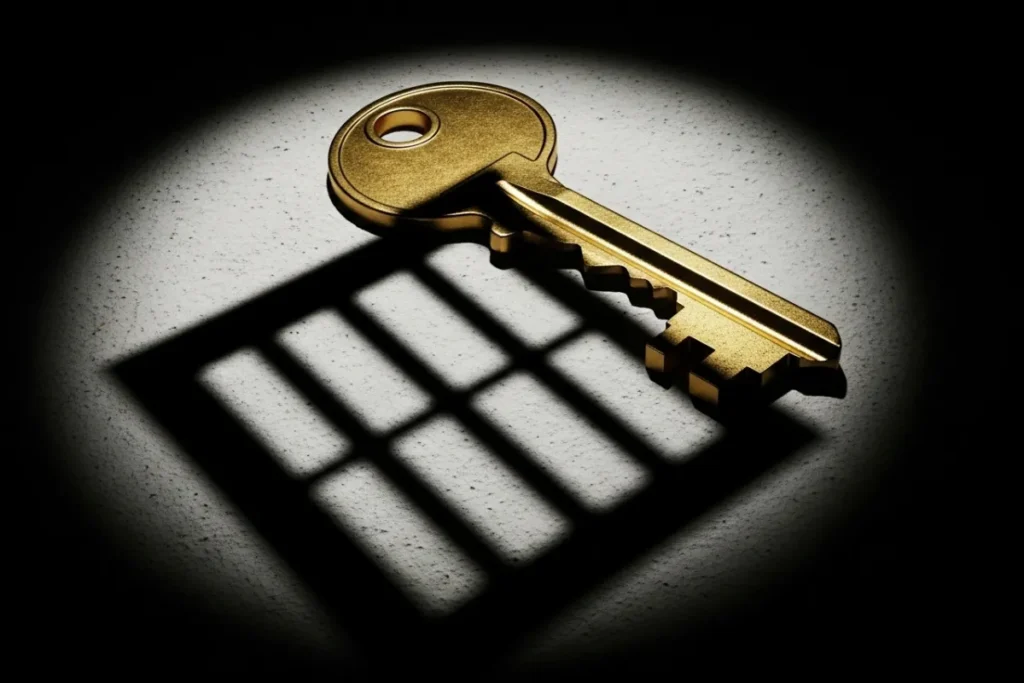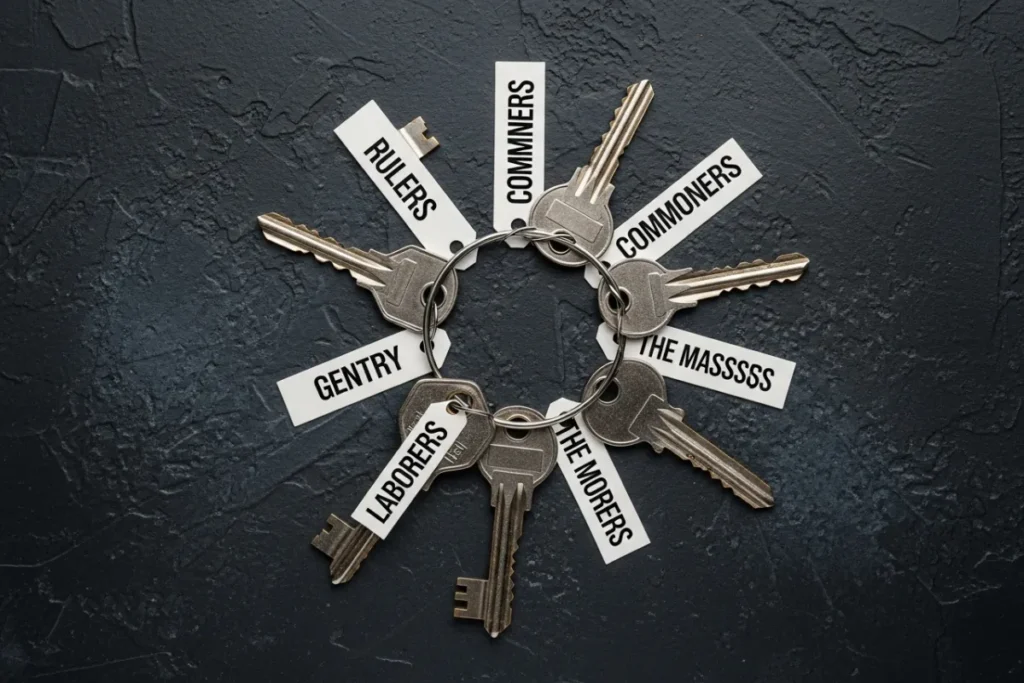Explore the profound history and symbolism of keys and locks throughout human civilization. This article delves into their evolution from mere safety tools to complex symbols of power and exclusion, reflecting societal dynamics and inequalities. Discover how modern security practices continue to reinforce social barriers while community responses aim to redefine access and inclusivity. Engage with an insightful narrative on the intersection of security, culture, and human interaction.
Table of Contents
Introduction: The History of Keys and Locks
The development of keys and locks has been instrumental in shaping the security landscape throughout human history. The earliest known locking mechanism dates back to ancient Mesopotamia around 4000 years ago. These primitive locks, made from wood and designed primarily for safety, indicated a significant evolution of access control practices. As civilizations advanced, so too did the technology behind door locks, introducing metal and sophisticated designs to enhance protection. This evolution of door locks marked the beginning of a profound relationship between security tools and social dynamics.
During ancient Egyptian times, metal was integrated into lock mechanisms, offering improved durability and complexity. This advancement in security not only served to safeguard personal possessions but also represented hierarchical structures within society. Locks became a symbol of ownership and control, emphasizing power dynamics as access was limited based on socio-economic status. The symbolism of Keys and Locks thus took root, leading to a tangible representation of wealth and societal division.
With the onset of the Middle Ages, the craft of locksmithing emerged, diversifying the designs of locks even further. The intricate artistry displayed in these locks was often a reflection of the owner’s wealth, acting as social security barriers against theft and intrusion. As classes began to form and expand, so did the association of Keys and Locks with inequality and protection. These advancements facilitated the notion that safety could be purchased, further reinforcing the disparities within society.
In modern times, the symbolism of keys has continued to evolve, interlinking with themes of access control and authority. Today, while locks serve the fundamental purpose of providing security, they also underscore broader societal issues, influencing the perception of who can access certain spaces and who remains excluded. As such, the historical significance of keys and locks is deeply entrenched in the fabric of human interaction, reflecting both our desire for safety and the boundaries that often separate us.
From Security to Symbol: The Transformation of Keys
The evolution of door locks and their accompanying keys can be viewed as a fascinating narrative of security intersecting with social dynamics. Initially designed primarily as tools to safeguard property and restrict access, keys have transitioned over centuries to embody a more complex symbolism of exclusivity and control. This transformation has been notable throughout various historical epochs, wherein the mere possession of a key indicated a unique social status or privilege. In ancient civilizations, for instance, Keys and Locks were often made from precious materials and reserved for the elite, creating a tangible demonstration of wealth and power.
As societies grew more complex, so too did the significance attributed to keys. The access control history illustrates how keys began to reflect the hierarchies within social structures, leading to a differentiated experience of security. A prime example can be seen during the Renaissance, when keys started to signify not just access to physical spaces, but also membership in exclusive social groups. The rich often had ornate keys to grand estates, whereas the poor remained outside these barriers, reinforcing social inequalities and highlighting the protection offered to the affluent.
This transition from a mere tool to an emblem of status continued into modern times, where social security barriers further exemplified these themes. The symbolism of keys is thus intertwined with narratives of inequality, as they often represent environments where some individuals hold the keys to security and opportunity while others are locked out. Consequently, Keys and Locks serve as more than protective devices; they symbolize the divisions that govern access within society, illustrating how a simple tool evolves into a complex representation of power dynamics and social stratification. The dual nature of keys as both practical instruments and symbols of fear illustrates their profound impact on societal relations across history.

The Role of Keys in Social Hierarchies
Throughout history, the symbolism of keys has been intertwined with social hierarchies, reflecting the power dynamics at play within societies. Access control has not merely served functional purposes—it has been a means through which individuals or groups exert dominance over others. The evolution of door locks, for instance, has been shaped by societal values and beliefs, often reinforcing inequalities that benefit those in power. Specific historical instances demonstrate how Keys and Locks have been utilized to isolate marginalized groups from certain spaces and opportunities.
In ancient civilizations, keys represented power, authority, and ownership. Possession of a key often conveyed an individual’s social standing, determining their access to essential resources and areas deemed significant. For instance, in medieval Europe, the grandiose keys of castles symbolized the gates to privilege and protection. Those who controlled these Keys and Locks were generally elite, while the common populace remained locked out, deprived of the benefits therein. This dynamic illustrates a clear connection between security tools, such as keys, and the establishment of social barriers—particularly against peasants and outsiders.
The industrial age further evolved the symbolic nature of keys with the rise of specialized locks and restricted access to knowledge and resources. In the context of social security barriers, certain groups were systematically excluded from accessing necessary services or spaces meant for societal advancement. The implementation of access control mechanisms reflected broader societal tensions, where marginalized communities faced institutional discrimination accentuated by the very tools meant to provide safety and privacy.
Moreover, in contemporary society, the symbolism of Keys and Locks extends beyond physical locks. Digital security measures also uphold the ongoing dynamics of inequality, where access to technology and information gatekept by passwords often mirrors the same social divides. Ultimately, the interplay between security and social hierarchies underscores not only the historical implications of keys but also the continuous relevance of access control in shaping our understanding of inequality and protection. These reflections highlight how the symbolism of keys has left an indelible mark on societal structures, still resonating in today’s landscape.
The Psychological Impact of Locking and Unlocking
The act of locking and unlocking doors transcends mere functionality; it embodies a complex psychological interplay of safety, control, and fear. Door locks have evolved significantly over time, serving not only as physical barriers but also as symbols embedded in the societal fabric. With the evolution of door locks comes an intricate relationship between the user and their environment. When individuals engage with locking mechanisms, they often experience a rush of emotions associated with sense of security or vulnerability, which can profoundly influence their psyche.
The symbolism of Keys and Locks, as pivotal tools in accessing secured spaces, intensifies feelings of power or helplessness. For some, having a key to a door is synonymous with social status or privilege, while for others, being locked out signifies exclusion and deprivation of essential resources. This dynamic is especially pertinent within discussions surrounding social security barriers and ongoing inequalities in various communities. The mere act of locking can reinforce societal divisions, cultivating feelings of isolation among those who lack access to spaces deemed safe or secure.
The fear of being locked out—or conversely, the feeling of safety derived from locking oneself in—highlights deeper issues of control within relationships and societal structures. As access control evolves, it intersects with broader themes of inequality and protection, shaping our collective consciousness. The psychological ramifications of these acts can lead to anxiety, distrust, or a longing for connection, ultimately affecting how individuals interact with both their physical surroundings and one another. In this light, the significance of door locks extends beyond the material, evolving into an emblem of our cultural narratives around safety and exclusion.

Cultural Representations of Keys and Locks
Throughout history, keys and locks have transcended their functional roles to become potent symbols deeply embedded in culture and social dynamics. In literature, art, and media, the symbolism of keys often parallels the themes of power, protection, and exclusion. For instance, in many narratives, keys are portrayed as possessive artifacts that unlock not only physical barriers but also social privileges, reflecting the profound implications of access control history and the evolution of door locks as a means of segregation.
In classic literature, such as Victor Hugo’s “Les Misérables,” keys symbolize authority and the nuances of social security barriers. The character Javert uses keys to denote not just his position of power, but also the systemic inequality that restricts the freedom of others. The key thus becomes a representation of societal oppression, illustrating how objects designed for protection can morph into tools of fear and discrimination.
Further exploring this phenomenon, visual artists have used keys and locks to depict societal divides. Works by contemporary artists often incorporate these motifs to comment on issues of inequality and access. For example, large installations featuring oversized locks serve as striking symbols that critique the barriers constructed by social hierarchies. These artistic expressions engage viewers in a dialogue about the implications of security measures and the ways in which they can reinforce divisions in society.
Media representations also play a critical role in shaping perceptions of the symbolism of Keys and Locks. Movies frequently use locks and keys as narrative devices, where the act of locking or unlocking signifies acceptance or exclusion. This serves as a reminder of how access control has been ingrained within societal frameworks, further illustrating the multifaceted meanings attributed to these everyday objects. In conclusion, keys and locks are not merely functional items but profound cultural symbols that evoke discussions about power dynamics and the nature of protection across diverse contexts.
Modern Security Tools: Reinforcing Inequality
Modern security tools, particularly advanced locking systems and access control technologies, play a significant role in reinforcing social inequalities that have persisted throughout history. The symbolism of Keys and Locks has historically been tied to power, privilege, and exclusion, and these themes continue to manifest in contemporary practices. The evolution of door locks from simple mechanisms to sophisticated electronic systems mirrors a broader trend where security measures not only protect but also segregate. In many urban areas, for instance, high-security locks and exclusive access codes benefit affluent neighborhoods, while economically disadvantaged communities often find themselves facing inadequate security solutions.
Access control history reveals a troubling correlation between technology and inequality. Advanced security measures today, including biometric scanners and surveillance systems, are often deployed in affluent settings, creating invisible barriers that further separate socio-economic classes. These modern tools can serve as social security barriers, limiting the access of those who lack economic resources or social privilege. The widespread integration of surveillance cameras, while ostensibly aimed at deterring crime, disproportionately affects marginalized communities, fostering an environment of constant monitoring and suspicion. Such practices contribute to a sense of fear and division rather than unity and security.
Additionally, the protection offered by modern security tools often comes at the cost of individual liberty and equality. The emphasis on heightened security measures can lead to a misunderstanding of safety, one that prioritizes surveillance over community cohesion. As these locks and barriers are applied, they serve a dual purpose; while they provide a measure of safety for some, they also propagate a landscape of inequality where access to security becomes a privilege rather than a right. The symbolism of Keys and Locks evolves in this context, representing not just access but also exclusion and division. In conclusion, the practices surrounding modern security tools illuminate the ongoing interplay of inequality and protection, highlighting the need for a more equitable approach to safety in our society.

Community Responses to Locking Systems
As society grapples with the symbolism of keys and the evolution of door locks, there has been a growing movement within communities and among activists to address the fears that accompany these security tools. Locking systems have often been associated with social security barriers, leading to feelings of exclusion and discrimination. However, many communities are striving to redefine the narrative surrounding access control, promoting inclusivity rather than division.
Activists have mobilized to foster discussions that challenge the conventional perception of locking mechanisms as purely protective devices. They advocate for an understanding that these systems can also perpetuate inequality. By bringing to light the implications of locking systems on marginalized communities, these groups aim to advocate for equitable security measures that consider the realities of all individuals, regardless of their social status. Workshops, forums, and community dialogues are being held to educate the public on the historical role of access control and to explore alternatives that don’t exclude vulnerable populations.
One powerful response has been the development of communal access systems, where keys and locks are replaced with secure yet inclusive mechanisms that allow shared access to spaces. Examples include community gardens and public restrooms where security is maintained without creating social barriers. These innovative approaches demonstrate that it is possible to ensure protection and accessibility simultaneously. Grassroots organizations often partner with local governments to redesign public spaces, emphasizing transparency and community trust instead of fear.
By reframing the conversation surrounding the symbolism of keys and their role in society, community-led initiatives aim to dismantle the negative connotations associated with locking systems. Through collective action and advocacy for equitable access, communities are challenging the status quo and striving towards a future where security does not come at the cost of exclusion.
Reimagining Keys: A Future of Inclusivity
The symbolism of keys has historically revolved around access and control, often reflecting broader societal inequalities and the often rigid barriers that separate individuals and communities. However, as we look towards the future, there is a pressing need to reconsider how we approach security and what it means to hold the keys to our communal spaces. Innovative security practices can challenge the traditional narratives associated with door locks and access control, moving towards more inclusive solutions that prioritize shared safety and community engagement.
One potential avenue for fostering inclusivity is the creation of shared spaces that eliminate the need for exclusive access thresholds. Community-driven initiatives can pioneer security measures that focus on collective responsibility rather than individual exclusion. By fostering a culture of cooperation, communities can redefine the role of security tools—from devices of fear to symbols of unity. For example, instead of individuals holding exclusive keys to certain areas, communities can implement digital access systems that allow for flexible entry based on shared needs and consensus, thereby challenging the conventional symbolism of keys.
Furthermore, understanding the evolution of door locks is essential to this reimagining. Historically, these locks have acted as gateways that reinforce social security barriers, enabling inequality through restricted access. However, contemporary advancements in technology can pave the way for smart locks that incorporate biometric authentication or community-based access codes. These innovations not only enhance security but also empower individuals by providing them with a collective stake in the safety of their shared environments.
By embracing innovative approaches and redefining the significance of security tools, society can move beyond the duality of fear and protection encapsulated in traditional symbolism of keys. In this way, the future can be envisioned as more inclusive, where everyone has equitable access and shared responsibility for collective security.
| Theme | Traditional View | Reimagined Future |
|---|---|---|
| Symbolism of Keys | Represent access, control, and social barriers | Represent shared access, unity, and community trust |
| Security Practices | Emphasize exclusion and individual ownership | Focus on inclusivity, cooperation, and collective responsibility |
| Access Systems | Physical keys with restricted, exclusive access | Digital systems with flexible, consensual community access |
| Cultural Impact | Reinforces inequality and separation | Promotes equality, shared ownership, and belonging |
| Technological Evolution | Mechanical locks that maintain rigid thresholds | Smart locks using biometrics or community codes to empower users |
| Community Role | Passive recipients of security rules | Active participants in shaping and managing their own safety measures |
Conclusion: Rethinking Security as a Social Construct
The discussion surrounding the symbolism of keys and the evolution of door locks reveals significant insights into the multifaceted nature of security within our society. While keys and locks are often perceived as mere instruments for access control, they have profound implications that extend beyond their basic functionality. Throughout history, these tools have served as barriers that reinforce social stratification and inequality, dictating who can enter spaces deemed secure and who remains excluded.
The access control history serves as a reminder of how these everyday objects can symbolize discrimination and protection, illustrating a broader narrative about societal values and power dynamics. The historical use of locks and keys has not only shaped physical security but has also manifested in social security barriers that impact marginalized communities. The implications are significant—access to resources, opportunities, and safe environments is contingent upon these protective measures, often revealing systemic inequities embedded within society.
As we draw our reflections to a close, it is crucial to recognize that the physical security these objects provide may often come at the cost of social security for others. Rethinking the ethics of these mechanisms forces us to confront uncomfortable truths about inequality in access and the potential for fear to govern our interactions and choices. The symbolism of keys transcends mere functionality; it encapsulates human experiences of trust, safety, exclusion, and belonging. Addressing these issues in our shared spaces becomes imperative, necessitating not just a reevaluation of security tools but a holistic understanding of the values they represent. By fostering discussions on these constructs, we can work towards creating a more equitable world where security does not come at the expense of others’ safety and rights.







